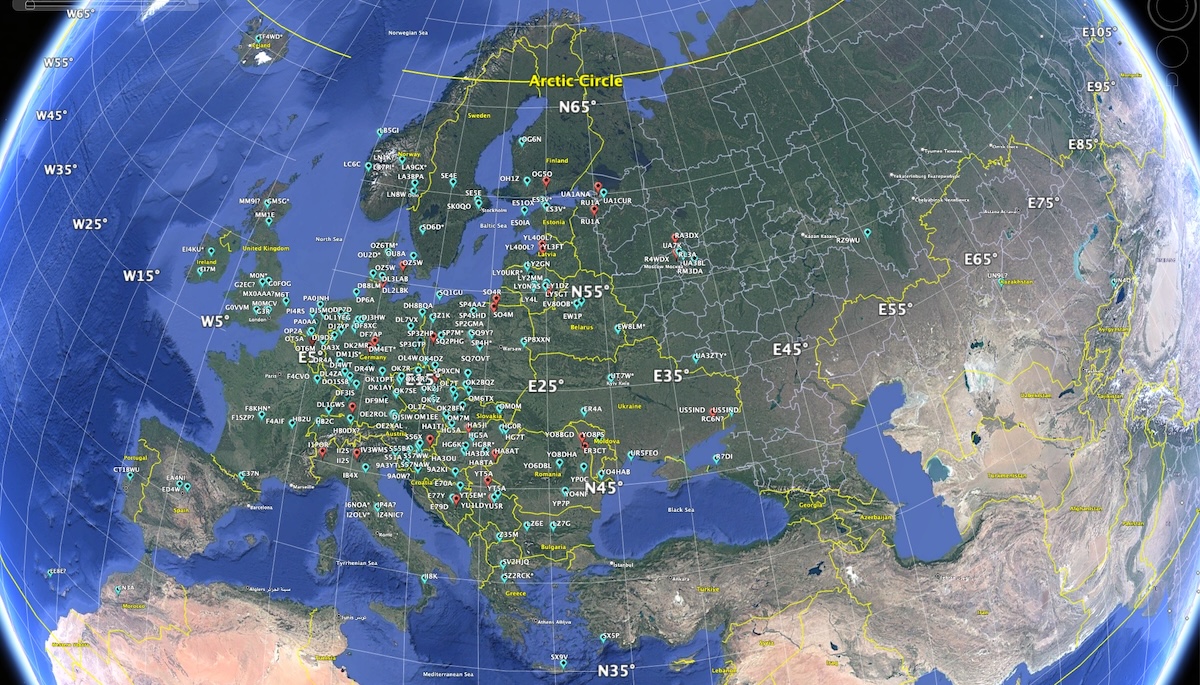Testing an 80/160 EndFed in CQ WPX SSB

Is an end fed wire antenna enough of an antenna to get on the air in a major contest? In this follow up to the WPX SSB contest I answer this question and give you my perspective of using a 80/160 end fed wire antenna in the CQ WPX Contest 2025.
RF-Guru EFHW16080 4 kW Inverted-L
With my Lannabo vertical for 80/160 m out of service this contest season, I needed a fast, practical solution to stay competitive in CQ WPX SSB 2025.
The test: Could a single end-fed wire hold its own in a major contest on the low bands?
Hardware at a Glance
| Spec | EFHW16080 figure |
|---|---|
| Power rating | 4 kW ICAS / 2 kW CCS / 1.5 kW FT8 / FT4 |
| Matching | Integrated 68:1 UNUN, < 0.2 dB insertion loss |
| Wire supplied | 82 m tinned-copper, XLPE jacket |
| Connector | Weather-sealed PL, IP66 |
| Weight | ≈ 650 g |
The antenna uses a robust, sealed transformer and rugged marine-grade wire. Recommended deployment is as an Inverted-L — not exactly optimal, but I deployed it using a tree-to-flagpole span at the island with good results.
Contest Deployment
- Geometry: Inverted-U layout – horizontal part 15 meter above ground with ends sloping 45° towards ground.
- Feed-point height: 2 m above ground
- Feedline & choke: RF-Guru’s 45 dB common-mode choke and a 50 meter run of Ecoflex-10 to the shack.
- Ground: Brackish Baltic Sea shoreline just a few meters away
I did spend some time adjusting the antenna length to resonance at 1840 kHz which also provided a suitable portion of the 80 meter SSB allocation. The antenna was resonant and ready a few days before the contest which gave me some time to test it on the bands.
WPX SSB Results on 160/80m
| Band | Final QSOs | QSO Points | Prefix Mults |
|---|---|---|---|
| 160 m | 35 | 70 | 16 |
| 80 m | 221 | 458 | 147 |
Together, that’s 256 QSOs and 163 multipliers — an excellent showing for a temporary wire antenna. In WPX scoring, all 160m, 80m and 40m contacts count double, making low-band activity especially rewarding and this antenna easily snapped up a lot of points to ad to the total.
- Countries worked: 25 on 160 m, 40 on 80 m
- Longest QSOs:
- 80 m: EE8E (Canary Islands) – ~4,302 km
- 160 m: US5IND (Ukraine) – ~1,817 km
- 160 m (outside contest): VK7* (Tasmania) – ~16,000 km
* Although no 2-way QSOs were completed with Australia during WPX SSB, the antenna proved its reach under the right conditions. While calling CQ, between the SSB and CW contests, on FT8, my signal was spotted by VK7 — over 16,000 km away — via PSK Reporter. Over several days, additional reception reports came in from VK2, VK3, VK5, and VK6.
This wasn’t a contest QSO, but it’s a strong indicator that the EFHW16080 can get out — even at extreme DX ranges — when propagation aligns. For a single end-fed wire, that’s impressive capability.
Enlarge the map images to see all the worked stations here ➜
Operating Impressions
- Signal levels were loud on short and medium distance signals (NVIS and E/S/W EU).
- RX was quiet on 160 meter, but S7 noise level on 80 m, RX antennas were not used in WPX SSB, but would have been helpful.
- VSWR was OK, but resonant antennas are narrow and the tuner in the amplifier was needed to extend bandwidth.
- An 80 meter long wire antenna takes time to deploy and tune, plan for a few hours of work.
Final Verdict
The RF-Guru EFHW16080 delivered good performance on the toughest bands. With relatively simple deployment and strong on-air results, this antenna proved it’s a good choice for high-power, low-band contesting — even in a temporary setup. As it also was able to reach across the globe to VK on 160m outside of the contest, it should also be able to provide some DX fun, especially in locations close to saltwater.
It’s now packed away, but was also used in CQ WPX CW. More on this later!
Thanks for reading, 73!
